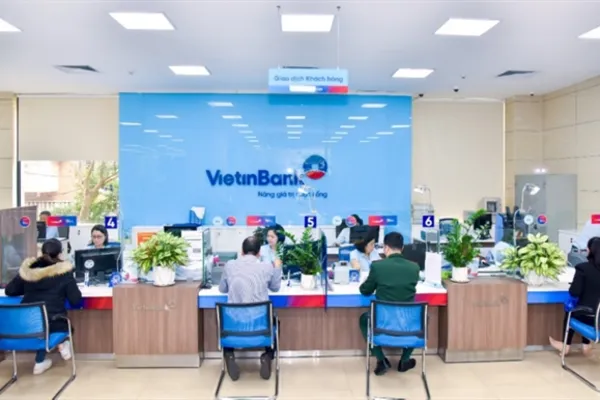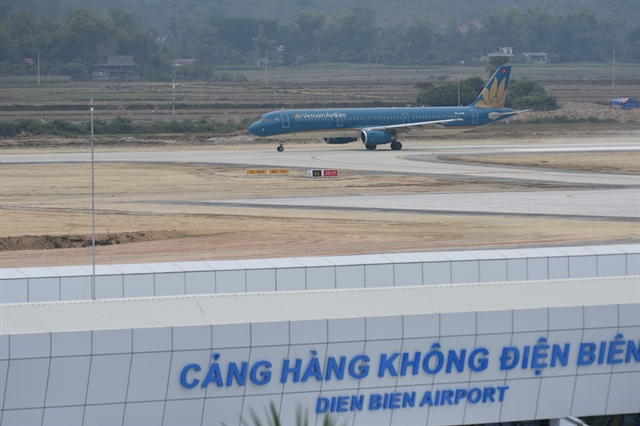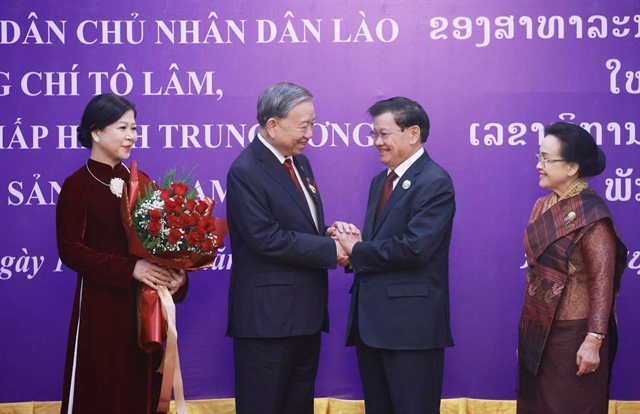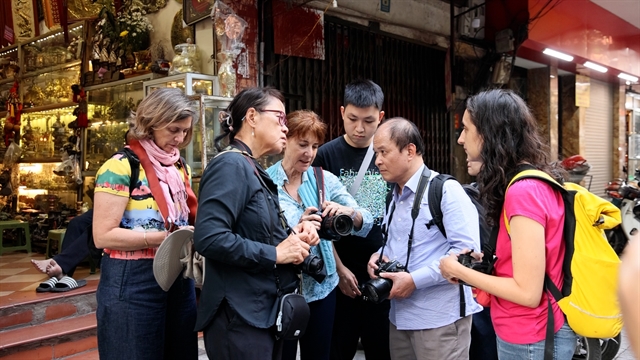 Life & Style
Life & Style

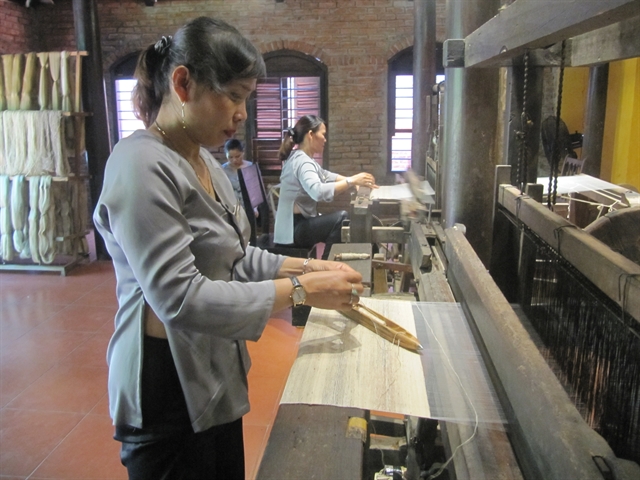
|
| Artisans demonstrate silk weaving at Hội An Silk Village. VNS Photo Công Thành |
HỘI AN — Local artisans from craft villages in Việt Nam and members of the International Silk Union joined the Fifth International Silk and Brocade Festival in Hội An’s Silk Village on August 9 and 10, creating trade links between Việt Nam and silk centres around the world.
The two-day event also included a field trip to Mã Châu silk craft, mulberry farming and silkworm breeding in Duy Xuyên District – where the silk trade developed in the 15th century – and Giao Thủy silk reeling factory.
The central province of Quảng Nam also introduced the River of Silk project to connect ancient Hội An, the Mỹ Sơn Sanctuary and silk villages and mulberry farms along the Thu Bồn River.
Chairman of Quảng Nam Silk Group Lê Thái Vũ said this year's festival aimed to create links among craft villages in Việt Nam and silk trading centres in Asia and Europe.
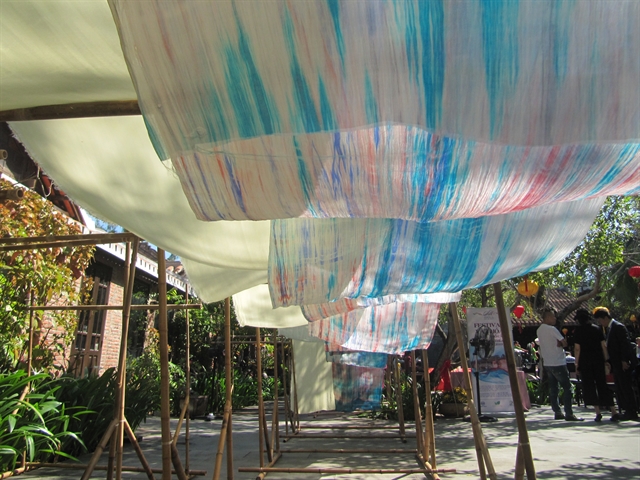
|
| Silk on display at the International Silk and Brocade Festival in Hội An. More than 80 craftspeople, traders and experts joined the event. VNS Photo Công Thành |
“The festival is an annual rendezvous for experts, craftsmen and traders to share experiences and solutions on how to restore the old trade in a sustainable way in combination with tourism,” Vũ said.
“We want to introduce the River of Silk project – a unique silk chain in Quảng Nam and a centre of silk production, mulberry farming and silkworm breeding," he said. "We have called for investment from domestic and foreign investors in the traditional silk trade chain."
General Secretary of the International Silk Association Fei Jianming said the festival has lured members of the association and honoured craftspeople around the world.
He said the festival in Hội An has boosted relationships among the world traders, craftspeople and silk villages.
Former chairman of the Nishijin Textile Industry Association Watanabe Takao said he hoped the silk trade would develop quickly in the coming years and that the festival would help promote co-operation between the Nishijin textile industry and Quảng Nam silk producers in the near future.
The festival also included exhibitions of silk products from Sichuan, Hangzhou and Qianshanyang in China; Sentosa silk from Cambodia; Nishijin in Japan and the silk villages of Vạn Phúc, Nha Xá, Mã Châu, Tân Châu Mỹ Nghiệp, Bảo Lộc, Hà Giang and Thái Bình in Việt Nam.
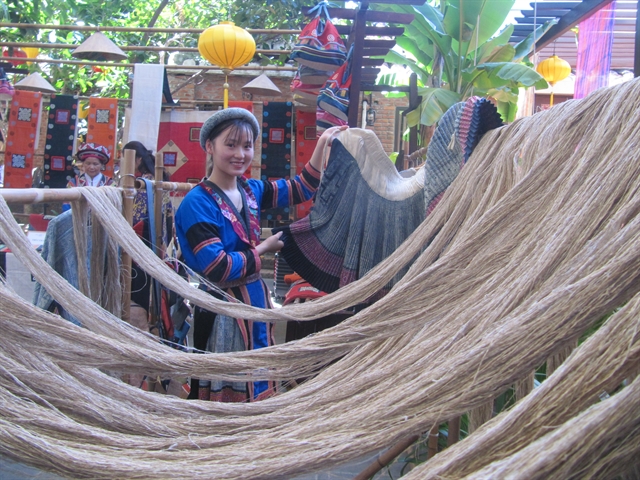
|
| A Mông ethnic minority woman displays a brocade product at an exhibition during the International Silk and Brocade Festival in Hội An. VNS Photo Công Thành |
Hồ Viết Lý, director of the HCM City-based Toàn Thịnh Silk Company, said his company has been using silk fibres to create a special blend with more traditional linen made from flax plants.
“In the unique brocade weaving of the Mông people in Hà Giang District, flax is used to create special linens," Lý said. "Our initiative creates a smooth linen that blends the characteristics of silk and flax."
Hang Lử, a 29-year-old from brocade Lùng Tám village in Hà Giang, said the traditional trade has been restored by the Mông community over past two decades.
He said brocade work has created stable incomes for 130 households in the village, and tourists from France, Germany and Japan were now among the regular customers.
Silk was among the commodities exchanged via trading vessels from western countries at the bustling Hội An Port as early as the 14th century, but the trade faded in the late 1990s.
Craftsmen from Mã Châu silk village have revived the traditional hand-made trade in recent years, and the village is now place to produce pure silk with natural dyes in Quảng Nam Province.
Quảng Nam used to have more than 2,000ha mulberry farms for silkworm breeding and silk production, but the area has been reduced to just 11ha, concentrated mainly in Duy Xuyên District with 30 households.
Hội An Silk Village, located at 28 Nguyễn Tất Thành Street in Hội An, is the only museum of the silk trade and silk products in central Việt Nam.
The Intellectual Property Agency of Việt Nam, in co-operation with the Korean Intellectual property office (KIPO) and Korean Invention promotion association (KIPA), have been building the province's Mã Châu natural silk brand to promote the product and develop tourism in central Việt Nam. — VNS


